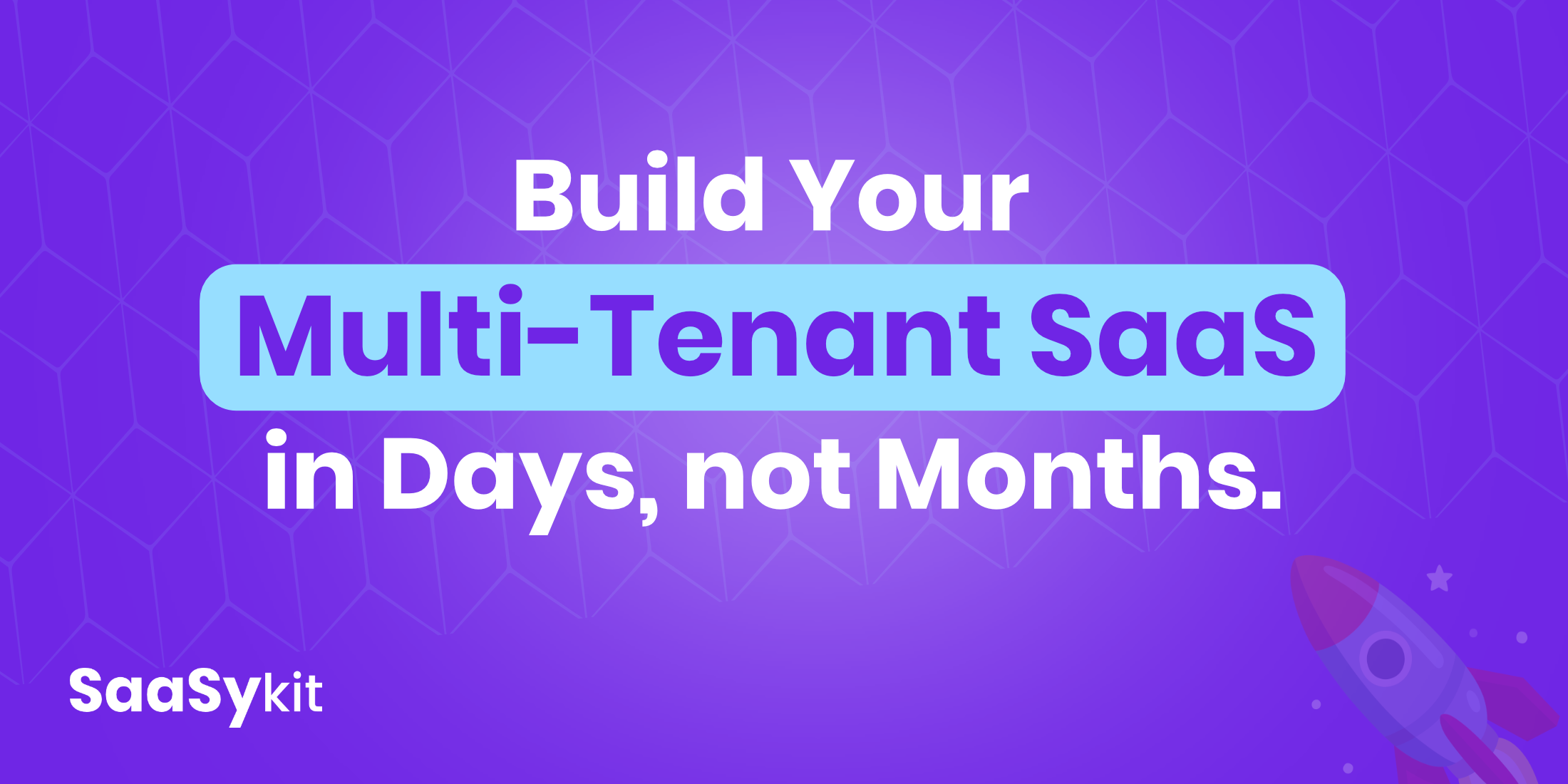https://saasykit.com/open-graphy?title=Best%20Laravel%20Multi-Tenant%20SaaS%20Starter%20Kits%20for%202024&url=https%3A%2F%2Fsaasykit.com%2Fblog%2Fbest-laravel-multi-tenant-saas-starter-kits-for-2024&signature=2c5f5e1d44657564d1490ae65169d473c902b4721baf784e40fe473940a6f0d5&.png
At first, the term "multi-tenancy" might sound like a technical challenge, but it’s actually a straightforward strategy for organizing software to serve multiple users seamlessly. While the concept itself is simple to grasp, its implementation can vary depending on the specific needs of different applications.
Let’s begin by defining what multi-tenancy really means.
Multi-tenant SaaS applications are a type of software that allows multiple users to access the same software instance. This is achieved by partitioning the software into separate, isolated environments that are dedicated to each tenant. Customer data could be stored in a separate database for each tenant, or in a shared database with data assigned to tenants by unique identifiers.
As an example, consider a email service provider like Google Workspace or Microsoft 365. Each customer (tenant) has their own set of email accounts, calendars, contacts, and other data, all of which is isolated from other customers. In this case, the tenant can invite users (its employees) to their account and they might be charged per user per month/year.
1. SaaSykit Tenancy
SaaSykit Tenancy is a feature-rich multi-tenant SaaS starter kit that provides everything you need to build a modern multi-tenant SaaS application.
SaaSykit Tenancy simplifies the process of building multi-tenant applications. You can create seat-based subscription plans, allowing your users to subscribe and automatically generate a tenant space. From there, they can invite users, assign roles and permissions, and manage access easily. Once tenants invite users and they accept the invitation, seat-based billing is handled behind the scenes and synced with all the supported payment providers (Stripe, Paddle, Lemon Squeezy) automatically.
Main features:
- Multi tenant dashboards: powered by FilamentPHP, each tenant has their own dashboard. Users can be part of different dashboards and they can easily switch between them.
- Flat-rate & Seat-based subscription plans: you can create flat-rate or seat-based subscription plans and charge customers based on the number of seats.
- One-time purchase products: you can offer your tenants one-time purchase products, such as a lifetime license for your software.
- User Invitations: tenants can invite users to their account, and users can accept or reject the invitation.
- Automatic Billing: SaaSykit Tenancy handles the billing process for you. It syncs seat-based billing with all the supported payment providers (Stripe, Paddle, Lemon Squeezy) automatically once a user accepts the invitation or is kicked out of the tenant.
- Team Management & Roles & Permissions: Tenants can manage their team members, invite or remove users, assign roles and permissions, and manage access easily.
- Multiple payment providers: Stripe, Paddle, and Lemon Squeezy support out of the box.
- Customizable UI & ready-to-use components: SaaSykit offers customizable UI and ready-to-use components. You can easily customize the UI to fit your brand and you can use the ready-to-use components to build your own UI.
- Built-in blog: SaaSykit Tenancy comes with a built-in blog that you can use to share news, updates, and other information with your tenants.
- Beautiful checkout process: SaaSykit Tenancy comes with a beautiful checkout process that you can use to charge your tenants.
- Multiple login providers: SaaSykit Tenancy supports multiple login providers, such as Google, GitHub, GitLab, and more.
- Product management & discount codes: you can manage your products and create discount codes to offer your tenants from the admin panel.
- Stats dashboard: track your MRR, churn rates, ARPU, and other SaaS metrics right inside your admin panel.
- Automated tests: all major features are covered by ever-growing automated tests suite.
Best for:
SaaSykit Tenancy is a great choice for SaaS developers who want to build a feature-rich multi-tenant SaaS application while saving their time and effort.
2. Tenancy for Laravel
Tenancy for Laravel boilerplate builts on top of the Tenancy for Laravel package, which comes with advanced multi-tenant features for Laravel.
Main features:
- Sign-up flow: Tenants can sign up and create their own account.
- Cashier billing: Tenancy integrates with Cashier billing (Paddle) to handle the billing process for you.
- Admin panel: comes with a Nova admin panel to manage tenants.
- Automated test: comes with a tenant-aware test suite.
Best for:
Advanced users who want to get their hands dirty while building their multi-tenancy application and having big control on the details, while building the other parts of their application on their own.
3. Spatie Laravel Multi-tenancy
Spatie multi-tenancy is not a starter kit, but an open source package that allows you to build multi-tenant applications in Laravel.
Main features:
- Easy to install & use: Spatie multi-tenancy is easy to install and configure.
- Support single database & multi-database: Spatie multi-tenancy supports both single database and multi-database approaches.
- Simple multi-tenancy features & not convoluted.
Best for:
Users who want a simple and efficient multi-tenancy package, and are willing to implement the rest of the application by themselves.
4. Tenancy Package
Just like Spatie multi-tenancy, Tenancy Package is not a starter kit, but an open source package that allows you to build multi-tenant applications in Laravel.
Features:
- Easy to install & use: Tenancy Package is easy to install and configure.
- Allows for great contol: you can configure the package to separate tenant files, caches, configs, database, etc.
Best for:
Similar to Spatie multi-tenancy, this package is ideal for developers seeking a straightforward multi-tenancy solution, who are comfortable building the remaining components of their application independently.
In the world of SaaS, building multi-tenant applications is often crucial for efficiently serving multiple clients. Fortunately, the Laravel ecosystem offers developers a range of powerful tools that simplify the implementation of multi-tenancy SaaS applications.
SaaSykit Tenancy is perfect for those who want a ready-to-use, feature-rich foundation, complete with seat-based billing, user management, and a customizable UI along with many other features. For developers with more technical knowledge who want to get their hands dirty, seeking more control over details, Tenancy for Laravel and the Spatie package offer powerful yet flexible options to build your SaaS exactly the way they envision it.
Choosing the right tool depends on your specific requirements and how much control you want over the implementation process. With the right choice, you’ll be well on your way to building a robust and scalable multi-tenant SaaS application that can grow alongside your business.
Keep building! 🚀
Laravel News Links



